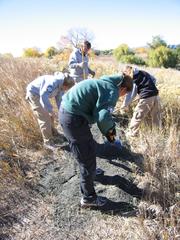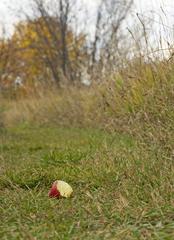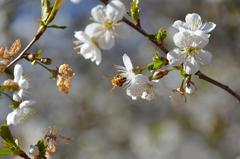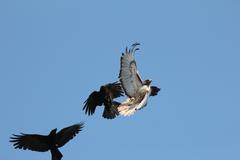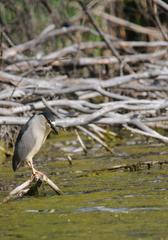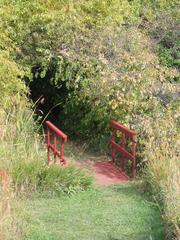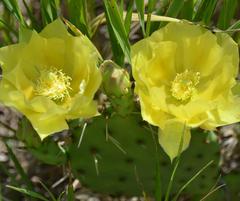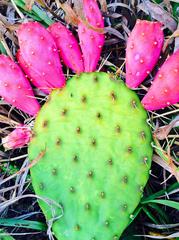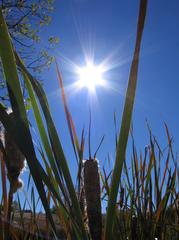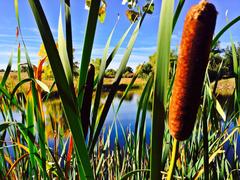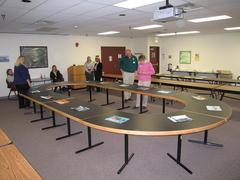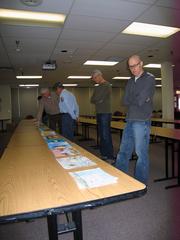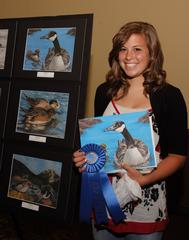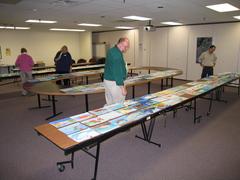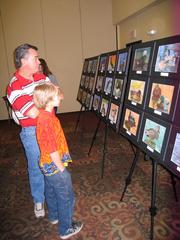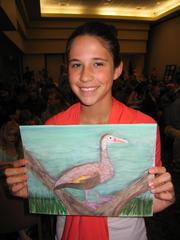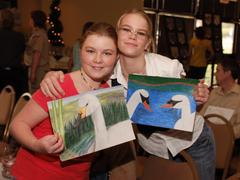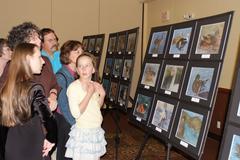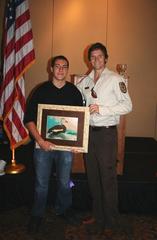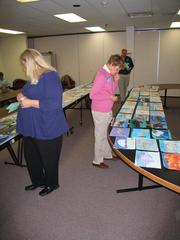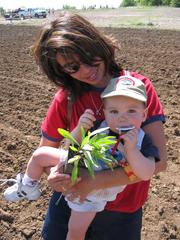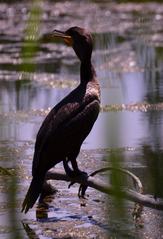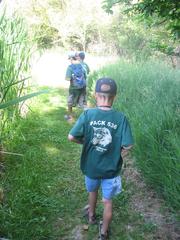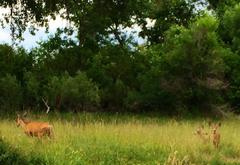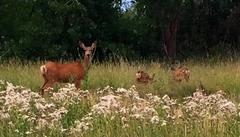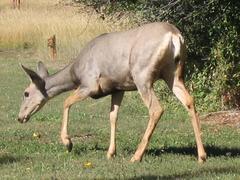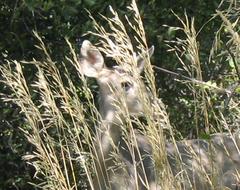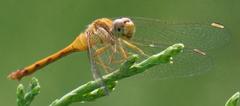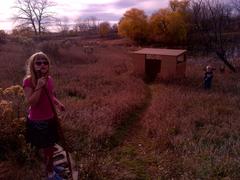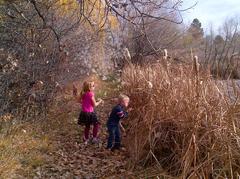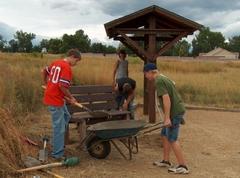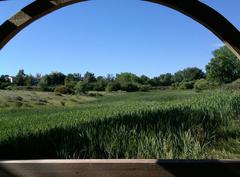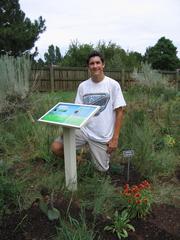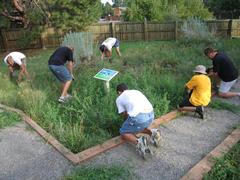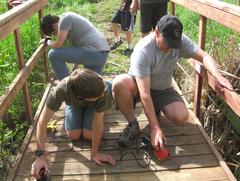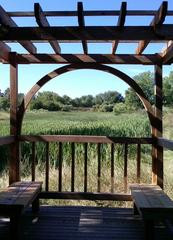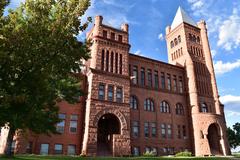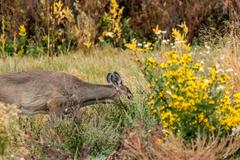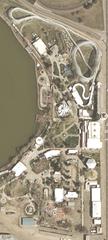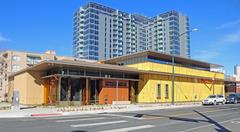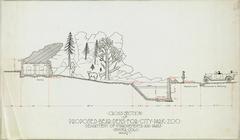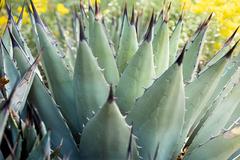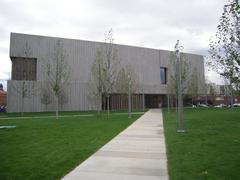
Visiting Two Ponds National Wildlife Refuge: Hours, Tickets, and Tips
Published Date: 31/07/2024
Introduction to Two Ponds National Wildlife Refuge
Welcome to Two Ponds National Wildlife Refuge, the smallest urban national wildlife refuge in the United States, located in Arvada, Colorado. This 72-acre sanctuary is a vibrant testament to community-driven conservation efforts and offers a unique blend of historical, ecological, cultural, and recreational values. Established in 1992, the refuge has become an oasis amidst urban sprawl, providing vital habitats for over 120 bird species and various mammals, including beavers and coyotes (Daily Camera, Snoflo). This guide will delve into the rich history of Two Ponds, its ecological significance, visitor information, travel tips, and upcoming developments, ensuring you make the most of your visit to this urban gem.
Contents
- Introduction
- History and Significance
- Origins and Establishment
- Ecological Importance
- Cultural and Recreational Significance
- Visitor Information
- Visiting Hours and Tickets
- Travel Tips
- Nearby Attractions
- Future Developments
- Challenges and Conservation Efforts
- Visitor Experience
- FAQ
- Conclusion
History and Significance
Origins and Establishment
Two Ponds National Wildlife Refuge holds a rich history. Originally slated for a housing project named “Two Ponds,” local residents campaigned to preserve the land, leading to its acquisition by the U.S. Fish and Wildlife Service. Officially dedicated in 1992, the refuge became a testament to community action and conservation efforts. Despite the addition of a third pond, the name “Two Ponds” remained (Daily Camera).
Ecological Importance
Despite its small size, Two Ponds National Wildlife Refuge is an ecological gem. Wetlands within the refuge provide vital ecological services such as water filtration, flood control, and habitat for diverse species. Home to over 120 bird species, including bald eagles and great blue herons, and various mammals like beavers and coyotes, the refuge is a crucial green space in an urban setting (Snoflo).
Cultural and Recreational Significance
Two Ponds National Wildlife Refuge is a cultural and recreational asset for Arvada. Visitors can enjoy wildlife viewing, hiking, and photography in a serene environment. Educational displays at the visitor center provide insights into the area’s wildlife and history. The refuge’s location within a bustling urban area makes it an easily accessible escape for city dwellers (Snoflo).
Visitor Information
Visiting Hours and Tickets
The refuge is open daily from sunrise to sunset. There are no entrance fees, making it an affordable destination for nature lovers. Special events and guided tours are occasionally offered, enhancing the visitor experience.
Travel Tips
- Best Time to Visit: Spring and summer are great for birdwatching and wildflower viewing, while fall offers vibrant foliage. Winter provides a quieter, peaceful experience.
- What to Bring: Binoculars for birdwatching, a camera for photography, and comfortable walking shoes for the trails.
- Accessibility: The refuge features accessible trails and facilities, ensuring a comfortable visit for all.
Nearby Attractions
While visiting Two Ponds, consider exploring nearby attractions in Arvada. The Arvada Historical Museum offers a deep dive into the area’s history, and the Olde Town Arvada district provides shopping, dining, and entertainment options.
Future Developments
Two Ponds National Wildlife Refuge will soon be part of the Rocky Mountain Greenway Trail project, connecting it with Rocky Mountain Arsenal, Rocky Flats National Wildlife Refuge, and Rocky Mountain National Park. This initiative aims to enhance the accessibility and connectivity of these protected areas (Daily Camera).
Challenges and Conservation Efforts
Urbanization poses challenges to the refuge’s integrity. However, conservation efforts by the U.S. Fish and Wildlife Service, local groups, and volunteers are crucial in safeguarding this habitat. Educational programs and community outreach play a vital role in promoting wetland and wildlife conservation.
Visitor Experience
Visitors can explore the refuge through hiking trails that offer close observation of wildlife. The visitor center, with its educational displays, provides a deeper understanding of the refuge’s ecological and historical significance. Each season offers unique experiences, from blooming wildflowers in spring to vibrant foliage in fall (Snoflo).
FAQ
- Is there an entrance fee? No, entry to the refuge is free.
- What are the visiting hours? The refuge is open daily from sunrise to sunset.
- Are there guided tours? Yes, special events and guided tours are occasionally offered.
- What wildlife can be seen? Over 120 bird species, various mammals like beavers and coyotes, and diverse plant life.
Conclusion
Two Ponds National Wildlife Refuge stands as a testament to community action and the importance of preserving natural habitats within urban environments. Its rich biodiversity, educational opportunities, and recreational offerings make it a valuable asset for both the local community and visitors. As future developments like the Rocky Mountain Greenway Trail come to fruition, the refuge’s significance and accessibility will only continue to grow, ensuring this sanctuary remains a cherished part of Colorado’s natural heritage.
Discover the Ecological Importance and Visitor Information for Two Ponds National Wildlife Refuge in Arvada, Colorado
Biodiversity and Habitat
Two Ponds National Wildlife Refuge supports a diverse array of habitats, including 63 acres of uplands and 9 acres of wetlands (Uncover Colorado). This diversity is crucial for maintaining a wide range of plant and animal species, contributing to the overall biodiversity of the region. The refuge is home to various native Colorado plants and wildlife, offering essential resources such as food, shelter, and breeding grounds. The presence of three ponds further enhances the habitat complexity, supporting aquatic and semi-aquatic species (FWS).
Wildlife Conservation
Two Ponds plays a significant role in wildlife conservation, particularly for species adapted to urban environments. Management practices aim to create a balanced ecosystem that supports both wildlife and human visitors. Techniques such as prescribed burns, biological controls, mowing, and planting native seeds are employed to maintain and restore habitats (FWS). The refuge also provides critical stopover habitat for migratory birds, offering a safe haven during their long journeys. Species such as red-winged blackbirds, raptors, and songbirds are commonly observed along the trails (FWS).
Urban Wildlife Conservation Program
As a flagship urban refuge, Two Ponds is part of the Urban Wildlife Conservation Program, which connects urban communities with nature. This program is crucial for fostering an appreciation for wildlife and conservation among city dwellers. The refuge offers various outdoor recreation opportunities, including hiking, wildlife observation, and photography, helping to cultivate a connection with land and wildlife conservation (FWS).
Environmental Education
Two Ponds National Wildlife Refuge is a valuable educational resource, offering several free, self-led, and teacher-led activities throughout the year. Programs educate visitors about native Colorado plants, wildlife, and conservation practices. The refuge’s environmental education area features trails with interpretive signage, providing an interactive learning experience for visitors of all ages (FWS).
Ecosystem Services
The ecological importance of Two Ponds extends beyond biodiversity and conservation. The refuge provides several ecosystem services that benefit the surrounding urban environment. Wetlands within the refuge play a crucial role in water purification, filtering pollutants from runoff before they reach larger water bodies. Additionally, the refuge’s vegetation helps stabilize soil, reducing erosion and improving air quality by trapping dust and other particulates (FWS).
Climate Resilience
Urban refuges like Two Ponds are increasingly recognized for their role in enhancing climate resilience. The refuge’s diverse habitats can help mitigate the impacts of climate change by providing refuge for species displaced by changing conditions. Moreover, the presence of green spaces within urban areas can reduce the urban heat island effect, lowering temperatures and improving the overall quality of life for city residents (FWS).
Community Engagement and Partnerships
Two Ponds National Wildlife Refuge actively engages with the local community through various programs and partnerships. These initiatives foster a sense of stewardship and encourage community involvement in conservation efforts. The refuge collaborates with local schools, organizations, and volunteers to support habitat restoration projects, educational programs, and recreational activities (FWS).
Research and Monitoring
Ongoing research and monitoring efforts at Two Ponds are essential for understanding the health and dynamics of the refuge’s ecosystems. Data collected from these activities inform management decisions and help track the success of conservation initiatives. Research topics include wildlife population studies, habitat quality assessments, and the effectiveness of restoration techniques (FWS).
Explore Two Ponds National Wildlife Refuge: Hiking, Wildlife, and Visitor Tips
Hiking and Trails
Two Ponds National Wildlife Refuge offers a variety of trails that cater to different levels of hiking enthusiasts. The refuge features approximately 3 miles of trails that meander through mixed prairie grasses, wetlands, and woodlands. These trails are ideal for hiking, nature observation, and wildlife photography. The trail surfaces are primarily crushed gravel or dirt, making them accessible for most visitors.
-
Loop Trail 1: Open from May to September, this 0.3-mile trail is located in the Environmental Education Area. It offers elevated views of the Rocky Mountain Front Range and several natural areas. The trail is wheelchair accessible with crusher fines used on the switchback to navigate steeper slopes. Benches are scattered along the trail for resting and wildlife viewing (FWS).
-
Loop Trail 2: Also open from May to September, this 0.3-mile trail is another option in the Environmental Education Area. It meanders near Marshall Pond and offers secluded seating and views. Red-winged blackbirds and small mammals are often seen along this path. The trail includes several small bridges and benches, making it ideal for photography (FWS).
-
Prairie Trail: Open year-round, this 2.4-mile trail is located on the west side of the refuge, known as the Prairie Management Area. It can be accessed via trailheads at either 77th and Kipling or the south side of the medical parking lot off 80th and Kipling. This flat, accessible trail loop is well-maintained and easy to navigate. Visitors can expect to see deer, raptors, songbirds, and even coyotes depending on the time of day (FWS).
Wildlife Observation
The refuge is home to over 120 species of birds, including sparrows, hawks, woodpeckers, red-winged blackbirds, magpies, warblers, waterfowl, and herons. The diverse ecosystems within the refuge support a variety of bird species, making it a prime location for birdwatching. Additionally, the refuge provides habitat and resting points along flyways for both native and non-native birds (FWS).
Mammals such as coyotes, red foxes, muskrats, raccoons, beavers, and deer are also commonly observed. The refuge’s wetlands, shrublands, and prairie grasslands offer a rich habitat for these animals, providing ample opportunities for wildlife observation and photography (FWS).
Educational Programs
Two Ponds National Wildlife Refuge offers a variety of educational programs designed to engage visitors of all ages. These programs include:
-
Wildlife Nature Programs: These programs provide insights into the diverse wildlife found within the refuge. They are designed to educate visitors about the importance of conservation and the role of the refuge in protecting native species (FWS).
-
Environmental Education Programs for Elementary Students: These programs are tailored for young learners and aim to instill a sense of environmental stewardship. They include guided nature hikes and hands-on activities that teach students about the local ecosystem (FWS).
-
Pollinator and Stewardship Programs: These programs focus on the importance of pollinators and the role they play in maintaining healthy ecosystems. Visitors can learn about different pollinator species and participate in activities that promote habitat conservation (FWS).
Visitor Tips
To ensure a safe and enjoyable visit to Two Ponds National Wildlife Refuge, consider the following tips:
- Check Operating Hours: The west side of the refuge is open from dawn to dusk, seven days a week. The east side is closed from October to April. Always check the official website for current hours of operation and any alerts before visiting.
- Trail Etiquette: Stay on designated trails to protect the habitat and avoid disturbing wildlife. Be mindful of other visitors and share the trails respectfully.
- Wildlife Safety: While observing wildlife, maintain a safe distance and avoid feeding or approaching animals. Use binoculars or a camera with a zoom lens for a closer look.
- Weather Preparedness: The weather can change rapidly, especially in the Rocky Mountain region. Dress in layers and bring appropriate gear for changing conditions. Sunscreen, hats, and plenty of water are recommended for sunny days.
- Leave No Trace: Follow the principles of Leave No Trace by packing out all trash, respecting wildlife, and minimizing your impact on the environment.
- Accessibility: The refuge offers accessible trails and facilities. If you have specific accessibility needs, contact the refuge headquarters at 303-289-0232 for more information.
Special Events and Volunteer Opportunities
Two Ponds National Wildlife Refuge hosts various special events and volunteer opportunities throughout the year. These events are designed to engage the community and promote conservation efforts. Some of the activities include:
- Community Volunteer Days: Join other volunteers in habitat restoration projects, trail maintenance, and other conservation activities. These events are a great way to give back to the community and support the refuge’s mission (Friends of the Front Range Wildlife Refuges).
- Reading with a Ranger: This family-friendly program combines storytelling with nature exploration. Children can enjoy stories read by a ranger and participate in related activities that foster a love for nature (Friends of the Front Range Wildlife Refuges).
- Archery and Fishing: The refuge offers a free walk-up archery range and catch-and-release fishing opportunities. The archery range is open daily from sunrise to sunset, and the fishing season runs from the first Saturday in April through November 30. Anglers 16 and older must have a valid Colorado Fishing License (Friends of the Front Range Wildlife Refuges).
History and Cultural Significance
Two Ponds National Wildlife Refuge holds a rich history and cultural significance. Established to protect the native prairie ecosystem, this refuge serves as a living testament to the region’s natural heritage. The area is a key historical site in Arvada, with roots tracing back to early conservation efforts in Colorado.
Summary and Final Thoughts
Two Ponds National Wildlife Refuge stands as a beacon of urban conservation, demonstrating the power of community action in preserving natural habitats within metropolitan areas. From its historical origins rooted in grassroots activism to its current role as a haven for diverse wildlife, the refuge offers a unique and enriching experience for visitors of all ages. Whether you’re interested in hiking, wildlife observation, or educational programs, Two Ponds caters to a wide array of interests and fosters a deeper appreciation for nature (Uncover Colorado, FWS). As future developments like the Rocky Mountain Greenway Trail enhance accessibility and connectivity, the significance of this refuge will undoubtedly continue to grow, offering even greater opportunities for urban dwellers to connect with the natural world (Daily Camera).
